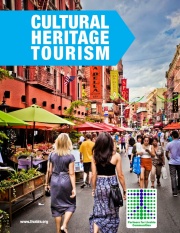
In our 37th year as an organization helping to empower communities with the tools to put them on the map as leaders in livability, Partners for Livable Communities is pleased to present this updated publication on cultural heritage tourism. As the tourism industry has boomed in the decades since Partners for Livable Communities began its cultural heritage tourism initiatives, communities have become increasingly eager to find ways attract tourists and capture the dollars they bring with them. However, when hard times come, it can be a challenge to persuade those among us of the benefits of preserving culture, heritage, and their artifacts from the past.
This guide represents the culmination of our experience and knowledge on an issue that has such a great potential for community development. Our hope is to demonstrate how cultural heritage is not just something to preserve for future generations, but is in fact an asset that can be leveraged to bring real economic benefits to the community.
Robert McNulty, president of Partners, can come to your community to speak about the necessity of developing a cultural heritage tourism strategy as well as share best practices and resources learned from Partners' decades of experience in this arena.
Download Cultural Heritage Tourism
Read more »
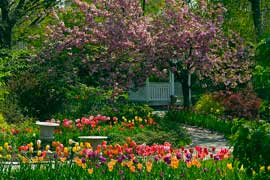
New York City is widely considered to be one of the most diverse places on the planet, with residents from hundreds of different countries living within close proximity of each other. Queens in particular has a broad mix of ethnic populations, which have lead some to consider it the most culturally diverse area in the world. Yet, when Susan Lacerte became the Executive Director of the Queens Botanical Garden, she noticed that the diversity of the borough was not reflected in the Botanical Garden’s attendance. To challenge that, Lacerte started The Ambassador Program to reach out to ethnic communities and find out what they wanted in their public garden.
Read more »
Terms:Arts & Culture, Community Building, Community Engagement, Cultural Institutions, Diversity, Healthy Communities, Heritage, IFC Best Practice, Multicultural, New York City, NY, Parks, Playgrounds & Gardens, Urban
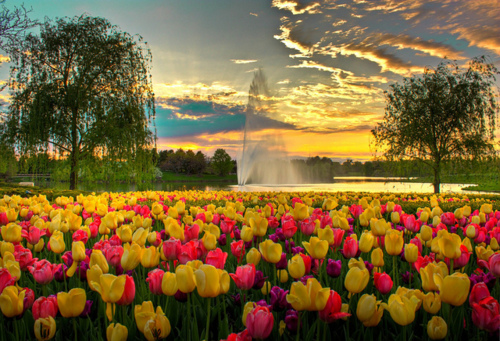
For residents of Chicago’s northern suburbs, the Chicago Botanic Garden is much more than just a collection of colorful plants and flowers. Since it opened more than 40 years ago, the 385 acre grounds have served as an important center for community activity and education. The Garden is home to 26 separate gardens and four natural areas, as well as a conservation science education center and a library with one of the country’s largest collections of botanical books. The grounds are also host to numerous community events and educational courses throughout the year.
Read more »
Terms:Arts & Culture, Chicago, IL, Community Development, Creative Economy, Cultural Institutions, Design, Environment, IFC Best Practice, Institutions as Fulcrums of Change , Parks, Playgrounds & Gardens
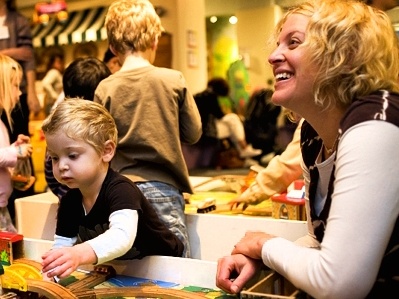
The Habitot Children’s Museum first opened its doors in downtown Berkley in 1998, and the institution has served over 950,000 residents of underserved communities in the Bay Area since. The 7,000 sq. foot facility is home to exhibits that help teach kids about the value of physical activity, water preservation, and art and culture. The hands-on Museum encourages early childhood education and aims to help support a generation of curious and creative kids.
Read more »
Terms:Arts & Culture, Community Building, Creative Economy, Cultural Institutions, Downtown Development, Education, Families, IFC Best Practice, Institutions as Fulcrums of Change , Museums, Youth

ArtSpace is a national organization, headquartered in Minneapolis, which works to transform communities through the arts. The organization runs 33 affordable, artist-housing facilities throughout the country, in both urban and rural areas, that help improve the livability of their neighborhoods by repurposing old or abandoned buildings to attract artists to live and work in the community.
Read more »
Founders Award for Civic Leadership
The Founders Award for Civic Leadership acknowledges groups and individuals of national stature for his or her contributions to the stewardship of communities. 
Bonnie Burnham is being honored for dedicating her career to preserving historic architecture and cultural heritage sites around the world. Burnham is President of the World Monuments Fund, which has worked at more than 500 sites in 91 countries.
Bonnie Burnham began her career as a supporter of cultural heritage with the International Foundation for Arts Research in New York. Appointed as the executive director in 1975, Burnham took on the seemingly insurmountable task of manually compiling the Art Theft Archives temporarily housed in the New York Explorer’s Club, her desk down the hall from the life-sized, stuffed Polar Bear.
Burnham was appointed the executive director of the World Monuments Fund in 1985. From that point forward, the World Monuments Fund became an invaluable asset in the fight to protect cultural heritage sites worldwide. With the support of major corporations such as American Express, the WMF produces the World Monuments Watch List every two years, identifying cultural heritage sites in danger of being eroded or destroyed. Today, the World Monuments Fund is the leading international voice defending cultural heritage and historic buildings throughout the world, leading hundreds of communities to embrace their heritage and imparting a greater sense of pride amongst residents.
Read more »
Founders Award for Civic Leadership
The Founders Award for Civic Leadership acknowledges groups and individuals of national stature for his or her contributions to the stewardship of communities.
Robert L. Lynch is being honored for more than 50 years of work to advance the arts in schools and communities across the United States. His work has resulted in public policy that recognizes the value of the arts in our society and his successes have promoted and protected access to the arts for the whole population. Lynch is the president of Americans for the Arts.
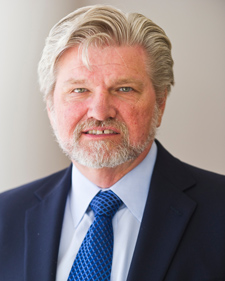
A true leader in the field of arts advocacy, Robert L. Lynch became the executive director of the National Assembly of Local Arts Agencies in 1985. He oversaw its successful merger with the American Council for the Arts twelve years later, creating the nationally-renowned advocacy group Americans for the Arts. Under Lynch’s leadership, the organization has grown to 50 times its original size, with a permanent staff of more than 60 individuals working in offices in New York and D.C. and an annual budget greater than $11 million.
Americans for the Arts has become the defining leadership group for arts advocacy in America in terms of membership and advocacy. Outside of his work with the organization, Lynch has served as counsel to the President of the United States on matters concerning the arts and has lent his expertise to the boards of a number of influential arts organizations, including the Craft Emergency Relief Fund and the Arts Extension Institute. Lynch’s admirable history of arts advocacy has allowed countless communities to enjoy the benefits that the arts can bring, and the creation of this leadership group is a truly great achievement for the arts in America today.
Read more »
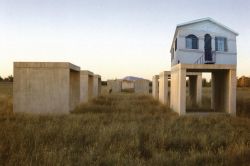 Photo Credit: Alan Rosenblum Photo Credit: Alan Rosenblum
Courtesy of Estudio Teddy Cruz
Home to the nation’s busiest United States-Mexico border crossing, San Ysidro is a suburb of San Diego, California, that lies just north of Tijuana, Mexico. Comprising mostly third- to first- generation immigrants, San Ysidro is often ignored, viewed as a place to pass through on the way to and from the border. Many San Ysidro-Tijuana families live in a bi-national condition, a state of being that finds families, work, education, affordable housing, health care, and economies tied to one another, and one that is currently struggling with the hot spots of drug cartel violence. Casa Familiar, a San Ysidro-based nonprofit organization, is working to invigorate the community by advocating for and assisting the residents in such areas as immigration services, education, and job placement[i].
Lyz Crane draws on the work of practitioners and researchers to characterize the field of arts-based community development in which arts and culture can help achieve place based change related to the physical, social, and economic dimensions of place. This paper examines the premise that the existence of arts is considered a powerful end in itself, Crane then outlines the variety of ways that the actors and activities involved in arts and community development work can relate to and interact with each other to create sustainable communities. Looking at the cultural ecology of place, creative economy development focuses on fostering local creative businesses and supporting creative workers both in the arts and in supporting industries while cultural development may focus on preserving cultural assets—traditions, language, stories—or on building on them to create stronger, more connected communities. There is also a complex community development ecosystem of organizations, interests, and tools. Stakeholders may involve arts in their agendas, create arts programming, provide or develop arts spaces, employ artists, and/or partner with arts organizations. Indeed, both the arts and community development are part of the same ecosystem and all of these 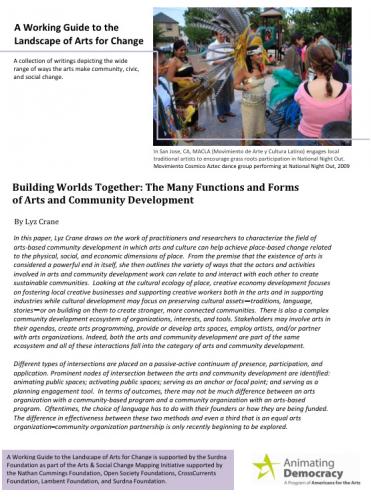 interactions fall into the category of arts and community development. interactions fall into the category of arts and community development.
Crane places different types of intersections on a passive-active continuum of presence, participation, and application. Prominent nodes of intersection between the arts and community development are identified: animating public spaces; activating public spaces; serving as an anchor or focal point; and serving as a planning engagement tool. Crane points out that, in terms of outcomes, there may not be much difference between an arts organization with a community-based program and a community organization with an arts-based program. Oftentimes, the choice of language has to do with their founders or how they are being funded. The difference in effectiveness between these two methods and even a third that is an equal arts organization–community organization partnership is only recently beginning to be explored.
Click here to download the whole document.
Read more »
Terms:2012, Arts & Culture, Business, CBC Report/Publication, Community Building, Community Development, Community Engagement, Creative Economy, Cultural Institutions, Featured, Other Reports/Publications, Placemaking, Public Art, Public-Private Partnerships

By Diana Nash of the Pink Line Project on July 12, 2012
There is a buzzword circulating in the DC arts scene that I had not heard about until I returned to the city two months ago. While the concept of using the arts to spur economic and community development is not new, DC is getting attention for the success of its “Arts and Culture Temporiums” since the first one launched along the H Street NE corridor in 2010. Temporiums fall under the larger category of the Temporary Urbanism Initiative, a project undertaken by the DC Office of Planning. The goal behind the initiative, and more specifically, temporiums, is to activate vacant or underutilized spaces by using them to showcase the talent of local artists and other creative entrepreneurs, along with the retail potential that lies within emerging neighborhoods. Think of them as “Pop Ups” that stay around a little longer and have greater potential benefits for the communities where they take place. Jessica Scheuerman, of Partners for Livable Communities, explains that temporiums allow people to “take risks, explore partnerships, and to commit to something” without the burden of a long-term commitment. Temporiums connect creative people seeking affordable space in their neighborhoods with landlords who have the available space that they haven’t been able to lease. It is a smart and increasingly popular concept that lays the groundwork for longer-term collaboration between property owners and neighborhood entrepreneurs.
Building on the success of earlier temporiums, the Office of Planning is targeting four emerging creative neighborhoods to benefit from a $250,000 grant to the city from ArtPlace, an unprecedented new private-public organization. ArtPlace is part of a national “creative place-making” movement that aims to drive revitalization across the country with arts at the center of economic development. The launch of DeanwoodxDesign marks the next step in the OP/ArtPlace grant initiative.
Read more »
Terms:2012, Announcements, Arts & Culture, CBC Press/Media, Community Building, Creative Economy, Culture Builds Communities, Neighborhood Revitalization, Other Events, Public Art, Washington, DC
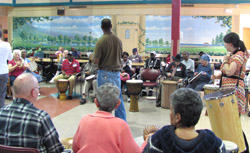 photo credit Wartburg Council for Creative Aging photo credit Wartburg Council for Creative Aging
The Wartburg Adult Care Community (The Wartburg) is a nonprofit organization dedicated to nurturing the mind, body, and spirit of older adults. Since its founding in 1899, The Wartburg has offered a continuum of care at its Mt. Vernon campus, and provides outreach to local parishes, senior centers, and civic organizations. In 2010, The Wartburg received a grant to enlist the aid of Lifetime Arts, which consults with many organizations on the design and implementation of creative aging programs and is led by a teaching artist. Lifetime Arts completed a survey of the Wartburg’s senior residents and staff, designed to gauge their interest in the arts. The findings were clear—residents and staff desired more arts and cultural programming.
In 2011, The Wartburg Council for Creative Aging was established to allow its nearly 500 senior residents in the assisted living, memory care, skilled nursing residence, and adult day programs to express themselves through art, song, theater, poetry, and oral histories. In difficult financial times, launching the Council required some creativity. Fortunately, the Council discovered a unique method for both cutting costs and serving the community; The Wartburg’s common rooms were vacant at night, while artists in the community were paying high rents for studio space. Ann Frey, the director of the Council, began recruiting teaching artists to use The Wartburg’s space in the evening as art studios, free of rent. In exchange, the artists were asked to teach classes to the older adult residents.
Read more »
 photo credit Dances for A Variable Population photo credit Dances for A Variable Population
Dancers dressed in vibrant red move across The High Line, an elevated historic rail line turned public park in Manhattan’s West Side, enticing passersby to stop and look at the beautiful performance. Half of the dancers seem to be young, fit, and professionally trained. The other half move more slowly, some dancing in place, and some sitting. In fact, they are all older adults.
Dance artist Naomi Goldberg Haas founded and directs Dances For A Variable Population (DVP), a dance company whose goal is to erase the borders between dancers and audience through its unique choreography and dance company, comprising adults 24 to 82 years of age. Haas enjoys site-specific dance performances, which place the audience and dancers of all ages in the same space. She says, “[In these] new conceptions of shared space, we celebrate how dance can be a vehicle for wellness and expression for seniors, persons with disabilities, youth, and regular folk; how dance can change from an ‘under-exposed’ art form in a community to become an active tool for community participation, enthusiasm, and social interaction.”
Read more »
 photo credit Deeply Rooted Productions photo credit Deeply Rooted Productions
Founded in 1995 by dancers Kevin Iega Jeff and Gary Abbott, Deeply Rooted Dance Theater teaches and performs dance as creative expression and community and spiritual healing. Jeff calls it “world class art from a grassroots perspective.”
Working within an African American dance aesthetic, Deeply Rooted explores topics as varied as the Somali civil war and famine, the quest to live in the face of AIDS, and early-twentieth-century African American cultures. Jeff and Abbott’s choreography stresses both technical virtuosity and the deep exploration of character and community. As one dancer explains regarding Deeply Rooted’s Life, which deals with personal struggles to live with AIDS, “I know I’m telling experiences of things I see every day. Right outside these doors, there’s some things about this piece that are going on.”
Read more »
Terms:2012, Aging, Aging in Place, AIP Best Practice, Arts & Culture, Chicago, IL, City Leaders Institute on Aging in Place, Cultural Institutions, Health & Wellness, Multicultural
 photo credit Lifetime Arts photo credit Lifetime Arts
Founded in 2008, Lifetime Arts promotes arts programming designed to engage older adults. A nonprofit organization, Lifetime Arts is committed to developing innovative programs which support creative aging and lifelong learning. To that end, Lifetime Arts offers a variety of services and programs. The organization is a clearinghouse for best practices; provides technical assistance, information services, and professional development to the individuals and organizations serving older adults through the arts; and helps to develop policy to enhance the quality of arts programs for older adults throughout the country.
As a service organization, Lifetime Arts developed Creative Aging in Our Communities: The Public Libraries Project, a program which demonstrates the viability and value of instructional arts programs offered in public libraries as a way to build a broad base of support for creative aging programming. The Public Libraries Project showcases the library as a center for access and learning for older adults; an “age-neutral” public space, the library is an accessible hub for older adults who are reluctant to go to senior centers, and is swiftly becoming an ideal center for programs that interest seniors.
Read more »
Terms:2012, Aging, AIP Best Practice, Arts & Culture, City Leaders Institute on Aging in Place, Community Engagement, Cultural Institutions, Culture Builds Communities, Life-Long Learning, New York City, NY, Rural
 photo credit Massachusetts Cultural Council photo credit Massachusetts Cultural Council
The Elder Arts Initiative joined artists, government, and service providers to engage older adults in the artistic process. Participants in the Elder Arts Initiative learned interviewing skills and techniques employed in the creative process, and had the opportunity to take part in a mentorship or pilot project of their own. Though considerable funding was curtailed in 2002, the Massachusetts Cultural Council (MCC) continues to support local arts programs in the state through grants.
The Initiative began in 1996, when the Cultural Council, the Massachusetts Extended Care Federation (an association of nursing homes), the Executive Office for Elder Affairs, and the State's Council on Aging held a series of meetings about older adults and the arts. The Cultural Council then launched the Initiative in 1997.
The National Endowment for the Arts provided funding for the Initiative through its Challenge America Program Initiative and "Artists and Communities: America Creates for the Millennium Program." For older adults, the benefits of the Initiative included social interaction, an enhanced sense of purpose, a window for introspection, and improvement in physical health. In addition, the Initiative enabled older adults to communicate their wisdom and experience to younger generations.
Read more »
 photo credit Intergeneration Orchestra of Omaha photo credit Intergeneration Orchestra of Omaha
Symbolized by a rose in full bloom and a rose bud, the Intergeneration Orchestra of Omaha (IGO Omaha) joins older, experienced musicians with young musicians, using a love of music to bridge generation gaps. The Orchestra explains that, “The rose in full bloom signifies the lifetime of experience the older musicians bring to the group, while the rosebud represents the emerging talents of our younger artists.” This intergenerational program is a win-win for all involved; the young gain the opportunity to develop their skills, while older participants are able to play the music they love well past the age of retirement. Perhaps more significantly, both young and old find support and friendship as they pursue musical excellence.
With the goal of joining two distinct generations “through the universal language of music,” the IGO of Omaha was started by Chris Gillette, current project director of the Orchestra and the director of the Community Services Division of the Eastern Nebraska Office on Aging (ENOA), and former co-worker Cora Lee Bell. The Orchestra was initially funded by a grant from the Peter Kiewit Foundation, but has since been supported by numerous other grants, donations, memberships, fundraisers, and performance fees, and a sponsorship from ENOA. The Orchestra is run by an elected board of directors, which includes two younger and two older musicians.
Read more »
Terms:2012, Aging, Aging in Place, AIP Best Practice, Arts & Culture, City Leaders Institute on Aging in Place, Community Engagement, Cultural Institutions, Intergenerational, Life-Long Learning, Youth
 photo credit Culture Bus photo credit Culture Bus
Culture Bus is at once a transportation service to arts and cultural events for older adults, and a unique treatment program for early-stage dementia patients. One of many adult day programs offered by CJE SeniorLife, in Chicago, Illinois, Culture Bus provides opportunities for socialization, creative expression, and intellectual stimulation designed to improve the quality of life and slow the effects of degenerative conditions such as Alzheimer’s disease for many older adults.
The Culture Bus emerged, in 2002, from an Alzheimer’s support group sponsored by Northwestern University’s Cognitive Neurology and Alzheimer's Disease Center. Its participants were seeking more time together and opportunities for intellectual and social engagement. One member of the group suggested using a bus to enable everyone to go downtown together. The Northwestern staff immediately saw the value in this idea, and reached out to CJE, a local leader in adult-day programming, to discuss a partnership.
Read more »
Terms:2012, Aging, Aging in Place, AIP Best Practice, Arts & Culture, Chicago, IL, City Leaders Institute on Aging in Place, Health & Wellness, Mobility, Social Services, Transportation
Housed in a stunning building designed by Frank Lloyd Wright, ASU Gammage at Arizona State University, one of the largest university-based theaters in the world, has been broadening its audience for many years. Its outreach extends to both immigrant and older adult audiences. Widely recognized for its work in Phoenix, ASU Gammage’s commitment becomes evident in the role played by one of its staff members: Michael Reed, the senior director of Cultural Participation and Programming, is responsible for developing and overseeing an astonishing array of performances, including explorations of theater arts for all ages, and programs highlighting the arts of various cultures.
The commitment to accommodating older adults, for example, was demonstrated while The Phantom of the Opera was at the theater for a four-week run. To better suit the preferences of older adult audiences, some performances were scheduled as matinees. Reed also explains that the house staff is very experienced in working with older adults and those who are frail or have disabilities. The staff works with ARTability, an Arizona organization that promotes accessibility to the arts for those with disabilities. Before each season begins, the staff reviews issues related to the Americans with Disabilities Act (ADA), though Frank Lloyd Wright’s design, while handsome, has made retrofitting ASU Gammage to meet the requirements of the ADA, and other evolving audience needs, quite difficult.
Read more »
Terms:2012, Aging, Aging in Place, AIP Best Practice, Arizona, Arts & Culture, City Leaders Institute on Aging in Place, Community Engagement, Cultural Institutions, Diversity, Education, Immigration, Intergenerational, Mobility, Youth
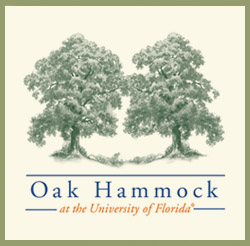 photo credit Oak HammockAs the baby boomers reach retirement age, institutions across the United States will have to find creative solutions to accommodate their burgeoning numbers. Despite this growing need, a retirement community on a college campus might not seem to be a great idea. It’s not difficult to imagine late-night police calls from seniors who think midnight is entirely too late to be playing loud music, or are appalled by the undergraduates who trample the beloved garden of a 90-year old during their late night escapades. But Oak Hammock at the University of Florida, Inc. has created just such an unlikely pairing, a relationship in which university administration, students, senior residents, and other stakeholders have found a lot to like. photo credit Oak HammockAs the baby boomers reach retirement age, institutions across the United States will have to find creative solutions to accommodate their burgeoning numbers. Despite this growing need, a retirement community on a college campus might not seem to be a great idea. It’s not difficult to imagine late-night police calls from seniors who think midnight is entirely too late to be playing loud music, or are appalled by the undergraduates who trample the beloved garden of a 90-year old during their late night escapades. But Oak Hammock at the University of Florida, Inc. has created just such an unlikely pairing, a relationship in which university administration, students, senior residents, and other stakeholders have found a lot to like.
Read more »
Terms:2012, Aging, Aging in Place, AIP Best Practice, Arts & Culture, City Leaders Institute on Aging in Place, Community Engagement, Environment, Florida, Health & Wellness, Housing, Intergenerational, Life-Long Learning, Town-Gown, Youth
 photo credit Osher Lifelong Learning Institutes photo credit Osher Lifelong Learning Institutes
Now a network of 117 higher education institutions spread across the country, Osher Lifelong Learning Institutes (OLLI) offer college-level courses designed to appeal to the interests and experience of older adults. OLLI programs are adapted to the needs and desires of the communities they serve, but they benefit from OLLI’s National Resource Center, which provides a network for sharing innovations in lifelong learning and also sponsors an annual conference. The institutions comprising OLLI range from top research universities to community colleges, and all provide unique programs.
Duke University’s is one of the most successful Osher Lifelong Learning Institutes in the country. The program began as the Duke Institute for Learning in Retirement, which was founded in 1977 as a joint venture between Duke Continuing Education and the Center for the Study of Aging and Human Development. Duke became one of the Osher Lifelong Learning Institutes in 2004.
Read more »
Terms:2012, Aging, Aging in Place, AIP Best Practice, Arts & Culture, City Leaders Institute on Aging in Place, Community Engagement, Education, Museums, National, Regional Cooperation, Town-Gown, Transportation
|
|